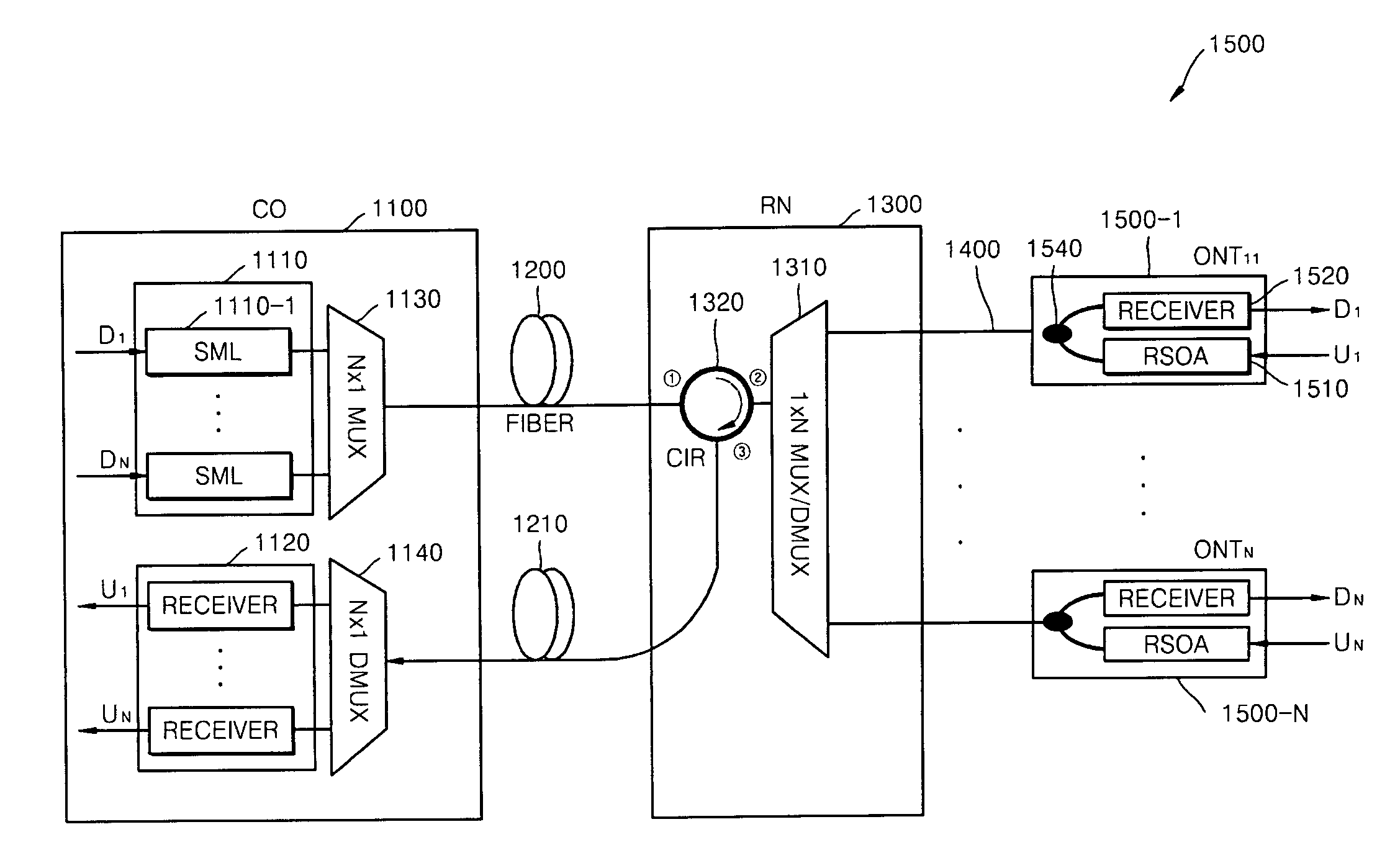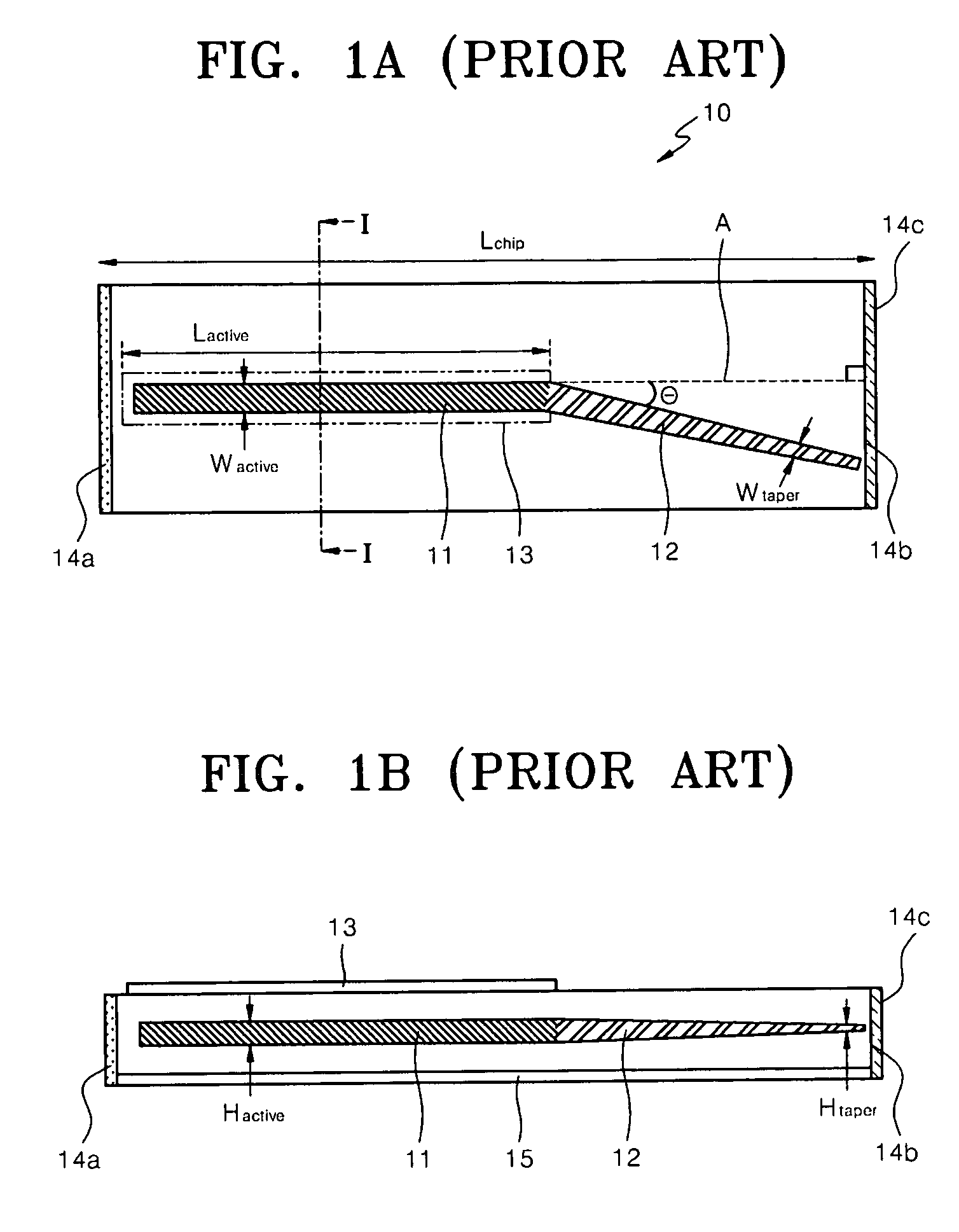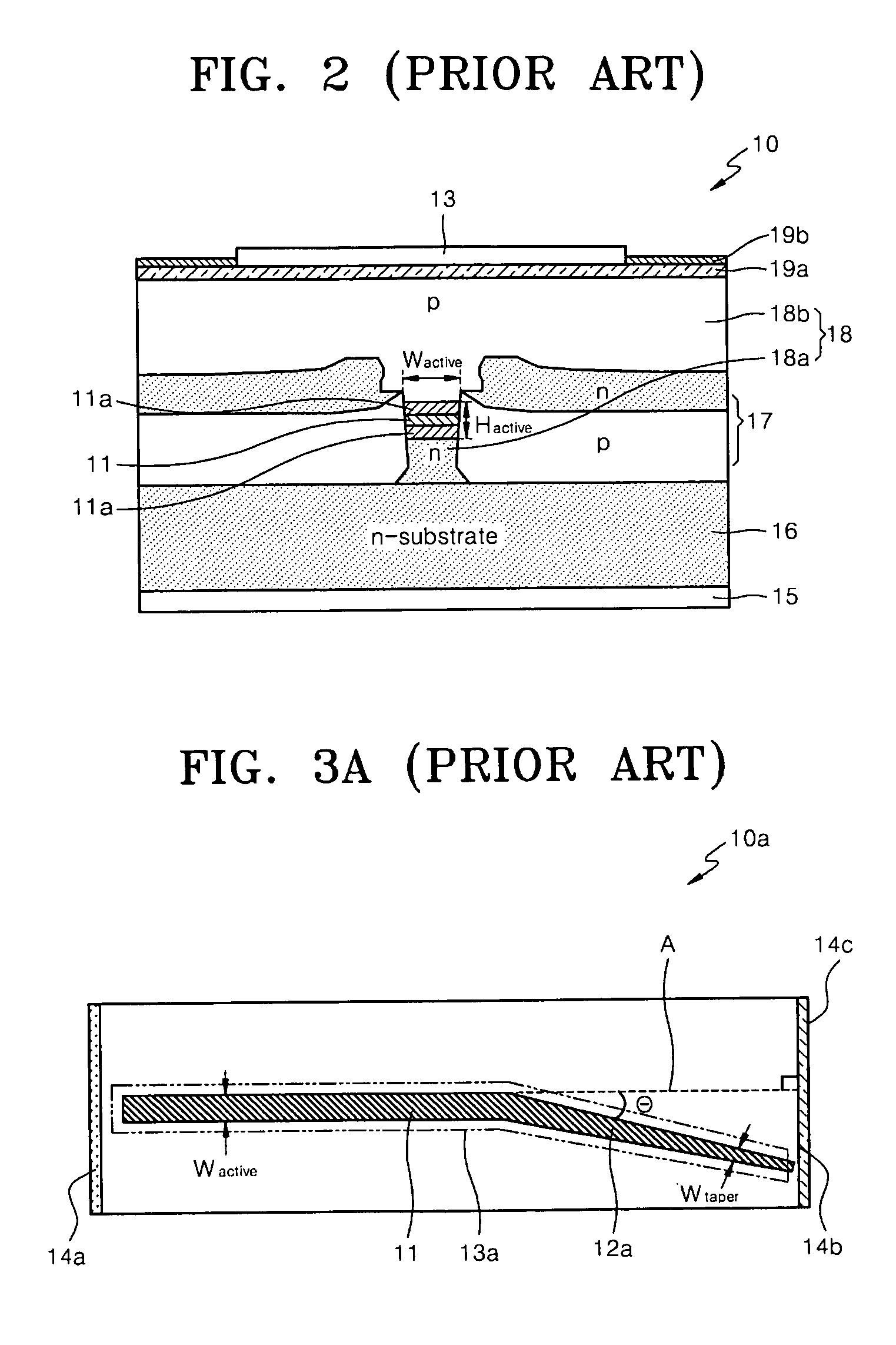Reflective semiconductor optical amplifier (RSOA), RSOA module having the same, and passive optical network using the same
a technology of semiconductor optical amplifier and reflector, which is applied in the field of passive optical network, can solve the problems of increasing the cost of wdm-pon, limiting the number of subscribers, and unable to transmit content, so as to improve the economic efficiency and practical use of bandwidth, reduce light loss, and improve polarization dependency
- Summary
- Abstract
- Description
- Claims
- Application Information
AI Technical Summary
Benefits of technology
Problems solved by technology
Method used
Image
Examples
Embodiment Construction
[0066]The present invention will now be described more fully with reference to the accompanying drawings, in which exemplary embodiments of the invention are shown. It will be understood that when a layer is referred to as being “on” another layer or substrate, it can be directly on the other layer or substrate, or intervening layers may also be present. In the drawings, the thicknesses and sizes of layers are exaggerated for clarity and irrelevant parts are omitted. The invention may, however, be embodied in many different forms and should not be construed as being limited to the embodiments set forth herein; rather, these embodiments are provided so that this disclosure will be thorough and complete, and will fully convey the concept of the invention to those skilled in the art. Like reference numerals in the drawings denote like elements.
[0067]Conventional Wavelength Division Multiplexing Passive Optical Network (WDM-PON) systems have disadvantages such as restriction of waveleng...
PUM
 Login to View More
Login to View More Abstract
Description
Claims
Application Information
 Login to View More
Login to View More - R&D
- Intellectual Property
- Life Sciences
- Materials
- Tech Scout
- Unparalleled Data Quality
- Higher Quality Content
- 60% Fewer Hallucinations
Browse by: Latest US Patents, China's latest patents, Technical Efficacy Thesaurus, Application Domain, Technology Topic, Popular Technical Reports.
© 2025 PatSnap. All rights reserved.Legal|Privacy policy|Modern Slavery Act Transparency Statement|Sitemap|About US| Contact US: help@patsnap.com



